Growing Zucchini at Home can seem daunting, but trust me, with a few clever tricks, you’ll be swimming in delicious, homegrown zucchini before you know it! Imagine baskets overflowing with vibrant green squash, ready to be transformed into zucchini bread, grilled side dishes, or even zoodles. Sounds amazing, right?
Zucchini, a member of the squash family, has a fascinating history. While its origins trace back to the Americas, it was in Italy that the zucchini, as we know it today, was developed in the 19th century. It quickly became a staple in Mediterranean cuisine and has since spread worldwide, prized for its versatility and ease of cultivation. But let’s be honest, sometimes “easy” isn’t always so easy, especially when dealing with pests, diseases, or simply not knowing the best techniques.
That’s where these DIY home gardening tricks come in! We all want a thriving garden, but not everyone has the time or resources for complicated setups. I’m here to share simple, effective hacks that will help you maximize your zucchini yield, even in small spaces. From clever companion planting strategies to DIY pest control solutions, these tips will empower you to growing zucchini at home like a pro, without breaking the bank. So, grab your gardening gloves, and let’s get started on your zucchini-growing adventure!
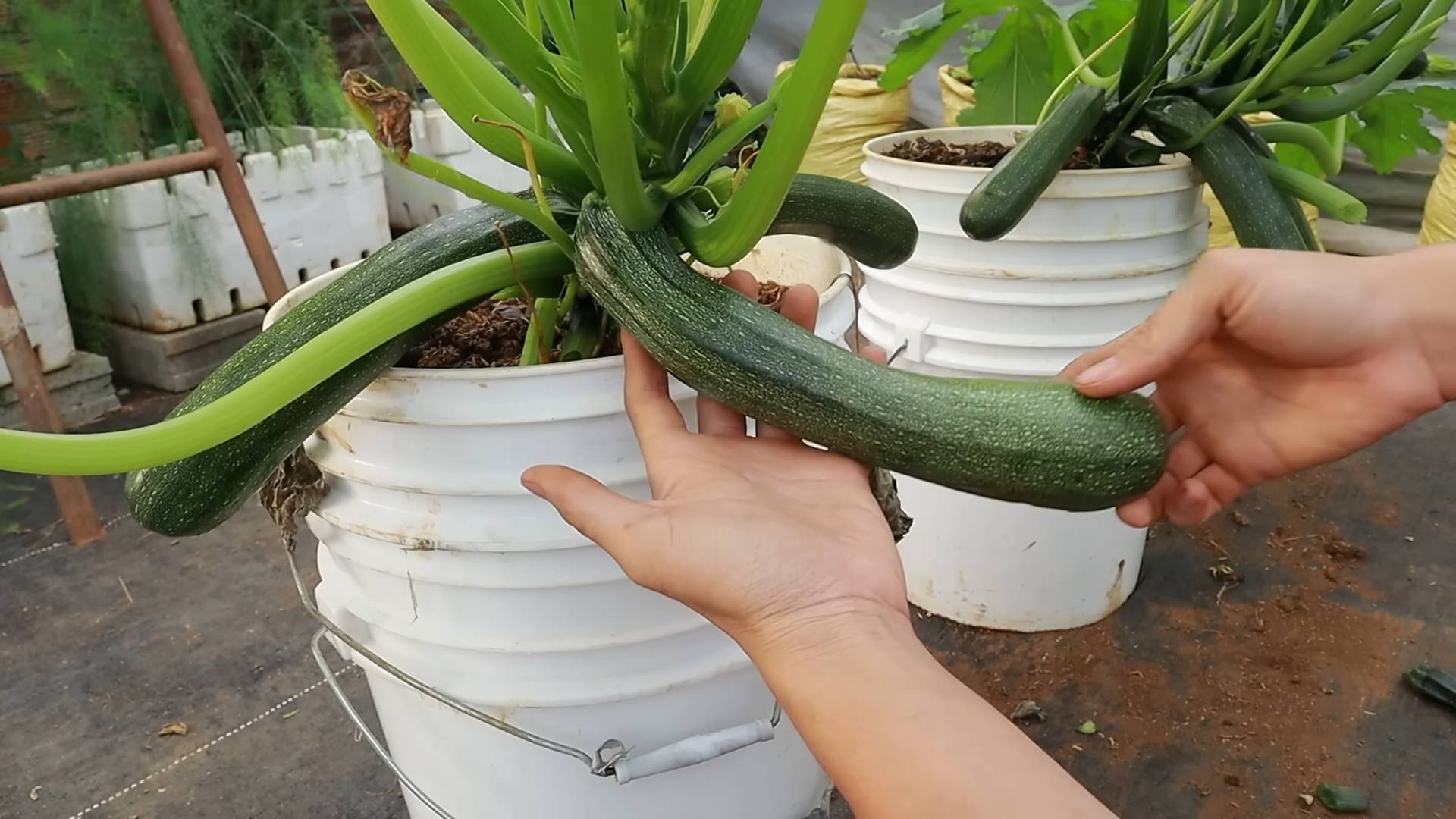
Growing Zucchini at Home: A Beginner’s Guide
Hey there, fellow garden enthusiasts! I’m so excited to share my experiences and tips on growing zucchini. It’s one of the most rewarding vegetables to cultivate, especially for beginners, because it’s relatively easy and produces a HUGE yield. Seriously, be prepared to share with your neighbors! Let’s dive into how you can get started growing your own delicious zucchini.
Choosing Your Zucchini Variety
Before we get our hands dirty, let’s talk about zucchini varieties. There are tons of options, each with its own unique characteristics. Here are a few popular choices:
* Black Beauty: This is a classic, reliable variety known for its dark green, almost black skin and excellent flavor. It’s a great all-around choice.
* Costata Romanesco: If you’re looking for something a little different, this Italian heirloom variety has beautiful ribbed fruits and a nutty flavor.
* Golden Zucchini: For a pop of color in your garden, try golden zucchini. They have a mild, slightly sweet taste.
* Round Zucchini (Eight Ball, One Ball): These are fun to grow and perfect for stuffing! They’re compact and produce adorable, round fruits.
I personally love growing Black Beauty because it’s so prolific and the flavor is fantastic. But feel free to experiment and find your favorite!
Getting Started: Planting Your Zucchini
Zucchini are warm-weather plants, so it’s crucial to wait until the danger of frost has passed before planting. I usually aim for late spring or early summer. Here’s how to get started:
Starting Seeds Indoors (Optional)
While you can directly sow zucchini seeds into the ground, starting them indoors gives them a head start, especially in cooler climates.
1. Timing is Key: Start your seeds about 3-4 weeks before the last expected frost.
2. Choose Your Containers: Use peat pots or biodegradable containers. Zucchini don’t like having their roots disturbed, so these types of pots make transplanting easier.
3. Sowing the Seeds: Fill the containers with a good quality seed-starting mix. Make a small hole about 1 inch deep and drop in 2-3 seeds per pot. Cover with soil and gently water.
4. Provide Warmth and Light: Keep the soil consistently moist and place the containers in a warm location (around 70-75°F). A heat mat can be helpful. Once the seedlings emerge, move them to a sunny windowsill or under grow lights.
5. Thinning: Once the seedlings have a few true leaves, thin them to one strong seedling per pot.
Direct Sowing Outdoors
This is the most common method, and it’s super easy!
1. Prepare the Soil: Zucchini needs well-drained, fertile soil. Amend your soil with compost or well-rotted manure to improve its structure and nutrient content. I usually dig in a generous amount of compost a week or two before planting.
2. Choose a Sunny Spot: Zucchini plants need at least 6-8 hours of sunlight per day.
3. Planting the Seeds: Sow the seeds about 1 inch deep and 2-3 feet apart. Zucchini plants get quite large, so give them plenty of room to spread out. Plant 2-3 seeds per hill and thin to the strongest seedling after they emerge.
4. Water Thoroughly: After planting, water the area gently but thoroughly.
Caring for Your Zucchini Plants
Once your zucchini plants are in the ground, it’s time to provide them with the care they need to thrive.
1. Watering: Zucchini plants need consistent moisture, especially during hot weather. Water deeply at the base of the plant, avoiding getting the leaves wet, which can lead to fungal diseases. I usually water in the morning so the leaves have time to dry out during the day. Aim for about 1 inch of water per week.
2. Fertilizing: Zucchini are heavy feeders, so regular fertilization is important. Use a balanced fertilizer (like 10-10-10) every few weeks, or side-dress with compost. I also like to use a liquid seaweed fertilizer every now and then for an extra boost.
3. Mulching: Apply a layer of mulch around your zucchini plants to help retain moisture, suppress weeds, and regulate soil temperature. Straw, wood chips, or shredded leaves work well.
4. Pest Control: Keep an eye out for common zucchini pests like squash bugs, squash vine borers, and aphids. Handpicking pests, using insecticidal soap, or covering your plants with row covers can help prevent infestations. I’ve found that checking my plants regularly and removing any pests I see is the most effective way to keep them under control.
5. Weed Control: Keep the area around your zucchini plants free of weeds, which can compete for nutrients and water. Hand-weeding is usually the best option, as hoeing can damage the shallow roots of the zucchini plants.
Dealing with Common Zucchini Problems
Even with the best care, you might encounter some problems while growing zucchini. Here are a few common issues and how to address them:
* Powdery Mildew: This fungal disease appears as a white, powdery coating on the leaves. To prevent powdery mildew, ensure good air circulation around your plants, avoid overhead watering, and apply a fungicide if necessary. I’ve had success with using a baking soda solution (1 teaspoon baking soda per quart of water) as a preventative measure.
* Blossom End Rot: This condition causes the blossom end of the zucchini to rot. It’s usually caused by calcium deficiency or inconsistent watering. Ensure your soil has adequate calcium and water your plants regularly. Adding crushed eggshells to the soil can also help.
* Squash Vine Borers: These pests can be devastating to zucchini plants. The larvae bore into the stems and feed on the plant tissue, causing the plant to wilt and die. To prevent squash vine borers, wrap the base of the stems with aluminum foil or nylon stockings. You can also inject Bacillus thuringiensis (Bt) into the stems to kill the larvae.
* Lack of Pollination: Sometimes, zucchini plants will produce flowers but no fruit. This is usually due to a lack of pollination. You can hand-pollinate the flowers by transferring pollen from the male flowers to the female flowers using a small paintbrush. The male flowers have a long, thin stem, while the female flowers have a small zucchini-like fruit at the base.
Harvesting Your Zucchini
This is the most exciting part! Zucchini grows quickly, so you’ll be harvesting in no time.
1. Timing is Everything: Harvest your zucchini when they are young and tender, usually about 6-8 inches long. Overgrown zucchini can be tough and seedy.
2. How to Harvest: Use a sharp knife or pruning shears to cut the zucchini from the plant, leaving a short stem attached.
3. Harvest Regularly: The more you harvest, the more your plants will produce. Check your plants every day or two during peak season.
Enjoying Your Harvest
Now that you have a bounty of zucchini, it’s time to get creative in the kitchen!
* Grilled Zucchini: Slice zucchini lengthwise, brush with olive oil, and grill until tender.
* Zucchini Bread: This is a classic way to use up a lot of zucchini.
* Zucchini Noodles (Zoodles): Use a spiralizer to create zucchini noodles and serve with your favorite sauce.
* Stuffed Zucchini: Hollow out zucchini and fill with a mixture of ground meat, rice, and vegetables.
* Zucchini Fritters: Grate zucchini, mix with flour, eggs, and seasonings, and fry until golden brown.
* Freezing Zucchini: If you have more zucchini than you can eat, you can freeze it for later use. Blanch the zucchini slices or cubes in boiling water for a few minutes, then cool them in ice water before freezing.
Tips for Success
Here are a few extra tips to help you grow the best zucchini ever:
* Rotate Your Crops: Avoid planting zucchini in the same spot year after year to prevent soilborne diseases.
* Companion Planting: Plant zucchini with beneficial companion plants like marigolds, nasturtiums, and basil to deter pests.
* Water Wisely: Water deeply and infrequently, rather than shallowly and frequently, to encourage deep root growth.
* Don’t Be Afraid to Experiment: Try different varieties, planting methods, and fertilizers to find what works best for you.
Growing zucchini is a fun and rewarding experience. With a little bit of care and attention, you can enjoy a bountiful harvest of delicious zucchini all summer long. Happy gardening!
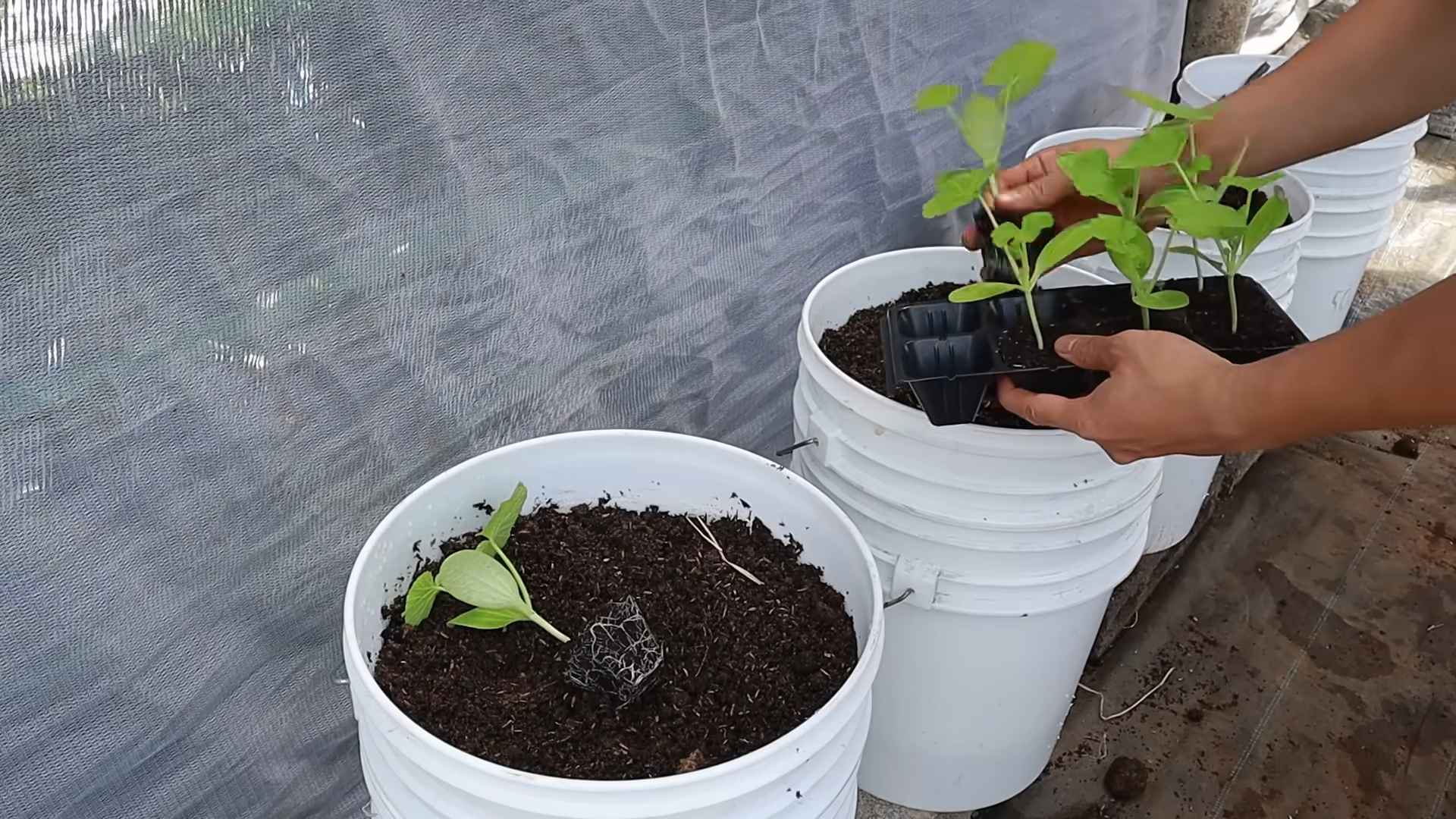
Conclusion
So, there you have it – a comprehensive guide to successfully growing zucchini at home! We’ve covered everything from selecting the right variety and preparing your garden bed to nurturing your plants and warding off common pests and diseases. But why is this DIY approach to zucchini cultivation a must-try?
Firstly, the flavor. Store-bought zucchini simply can’t compare to the fresh, vibrant taste of homegrown produce. Imagine biting into a zucchini you’ve nurtured from seed, its sweetness intensified by the sun and its texture perfectly crisp. The difference is truly remarkable.
Secondly, control. When you grow your own zucchini, you have complete control over what goes into your food. You can choose to use organic methods, avoiding harmful pesticides and herbicides, ensuring that you’re feeding yourself and your family the healthiest possible produce. This peace of mind is invaluable.
Thirdly, abundance. Zucchini plants are incredibly prolific. With just a few plants, you can easily harvest enough zucchini to feed your entire family and even have some to share with friends and neighbors. Get ready for a zucchini bonanza!
But the benefits don’t stop there. Gardening is a therapeutic activity that can reduce stress, improve your mood, and connect you with nature. Growing zucchini at home is a rewarding experience that offers a sense of accomplishment and satisfaction.
Now, let’s talk about variations and suggestions. While we’ve focused on traditional green zucchini, don’t be afraid to experiment with different varieties. Consider trying yellow zucchini, round zucchini, or even heirloom varieties for a unique flavor and appearance.
You can also get creative with your planting methods. Try growing zucchini in raised beds, containers, or even vertical gardens to maximize space and add visual interest to your garden. Companion planting is another great way to enhance your zucchini’s growth. Planting basil, marigolds, or nasturtiums near your zucchini can help deter pests and attract beneficial insects.
And finally, don’t forget about the blossoms! Zucchini blossoms are edible and delicious. They can be stuffed, fried, or added to salads for a delicate, floral flavor.
We’ve armed you with all the knowledge you need to embark on your zucchini-growing adventure. Now it’s time to get your hands dirty! We strongly encourage you to try this DIY trick and experience the joy of harvesting your own fresh, delicious zucchini.
But the journey doesn’t end here. We want to hear about your experiences! Share your tips, tricks, and triumphs in the comments below. Let us know what varieties you’re growing, what challenges you’ve faced, and what delicious recipes you’ve created with your homegrown zucchini. Together, we can build a community of passionate gardeners and zucchini enthusiasts. So, go forth, plant your seeds, and get ready to enjoy the bountiful harvest of your own backyard! Remember, mastering the art of growing zucchini at home is not just about the food; it’s about the journey, the connection to nature, and the satisfaction of creating something truly special.
FAQ
Frequently Asked Questions About Growing Zucchini at Home
1. How much sun does zucchini need?
Zucchini plants thrive in full sun, requiring at least 6-8 hours of direct sunlight per day. Insufficient sunlight can lead to leggy growth, reduced fruit production, and increased susceptibility to diseases. Choose a location in your garden that receives ample sunlight throughout the day. If you live in a particularly hot climate, some afternoon shade can be beneficial to prevent the plants from overheating.
2. What kind of soil is best for zucchini?
Zucchini prefers well-drained, fertile soil that is rich in organic matter. Before planting, amend your soil with compost, aged manure, or other organic materials to improve its structure, drainage, and nutrient content. The ideal soil pH for zucchini is between 6.0 and 7.5. You can test your soil pH using a home testing kit or by sending a sample to your local agricultural extension office. If your soil is too acidic, you can add lime to raise the pH. If it’s too alkaline, you can add sulfur to lower the pH.
3. How often should I water zucchini plants?
Zucchini plants need consistent moisture, especially during hot, dry weather. Water deeply and regularly, aiming to keep the soil consistently moist but not waterlogged. Water at the base of the plants to avoid wetting the foliage, which can increase the risk of fungal diseases. A good rule of thumb is to water when the top inch of soil feels dry to the touch. Mulching around the plants can help retain moisture and suppress weeds.
4. When is the best time to plant zucchini?
Zucchini is a warm-season crop that should be planted after the last frost. The ideal soil temperature for germination is between 65°F and 75°F. You can start seeds indoors 3-4 weeks before the last frost and transplant them outdoors once the weather has warmed up. Alternatively, you can direct sow seeds directly into the garden after the last frost. In warmer climates, you can plant zucchini multiple times throughout the growing season for a continuous harvest.
5. How do I prevent common zucchini pests and diseases?
Zucchini plants are susceptible to several pests and diseases, including squash vine borers, squash bugs, powdery mildew, and blossom end rot. To prevent these problems, practice good garden hygiene, such as removing plant debris and weeds. Inspect your plants regularly for signs of pests or diseases and take action promptly. You can use organic pest control methods, such as insecticidal soap or neem oil, to control pests. To prevent powdery mildew, ensure good air circulation around the plants and avoid overhead watering. Blossom end rot is caused by calcium deficiency, so make sure your soil is rich in calcium and water consistently.
6. How do I harvest zucchini?
Zucchini is best harvested when it is young and tender, typically when it is 6-8 inches long. Use a sharp knife to cut the zucchini from the plant, leaving a short stem attached. Regular harvesting encourages the plant to produce more fruit. Overripe zucchini can become tough and seedy, so it’s important to harvest them frequently.
7. What can I do with zucchini blossoms?
Zucchini blossoms are edible and delicious. They can be stuffed with cheese and herbs, dipped in batter and fried, or added to salads. To harvest zucchini blossoms, pick them in the morning when they are fully open. Remove the pistil from female blossoms and the stamen from male blossoms before cooking.
8. My zucchini plant is producing lots of flowers but no fruit. What’s wrong?
This is a common problem that can be caused by several factors, including lack of pollination, insufficient sunlight, or nutrient deficiencies. Zucchini plants have separate male and female flowers. The female flowers have a small zucchini fruit at the base, while the male flowers do not. Pollination is necessary for the female flowers to develop into fruit. You can hand-pollinate the flowers by transferring pollen from the male flowers to the female flowers using a small brush. Make sure your plants are receiving enough sunlight and nutrients.
9. Can I grow zucchini in containers?
Yes, you can grow zucchini in containers, but you’ll need to choose a large container that is at least 24 inches in diameter and 24 inches deep. Use a high-quality potting mix and make sure the container has good drainage. Water regularly and fertilize every 2-3 weeks. Choose a bush variety of zucchini for container growing, as they are more compact than vining varieties.
10. How do I store zucchini?
Zucchini can be stored in the refrigerator for up to a week. Wrap it loosely in plastic wrap or store it in a perforated plastic bag. You can also freeze zucchini by shredding it and blanching it for 1-2 minutes before freezing. Frozen zucchini can be used in soups, stews, and baked goods.

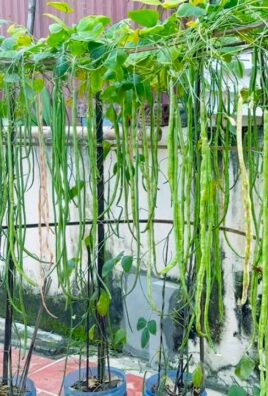
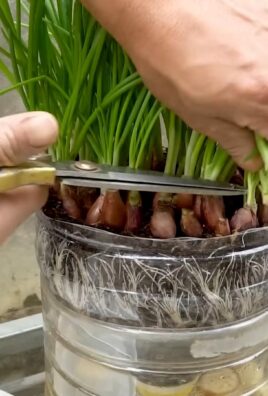
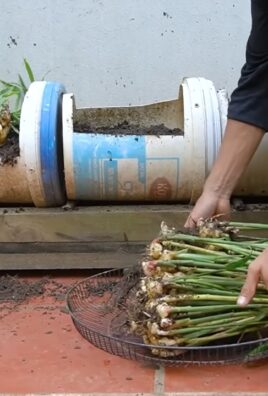
Leave a Comment